Did you bake a cake only to discover the cake collapsed in the oven? Or maybe your cakes sink when you take them out of the oven? Find out why cakes sink and what you can do (or not do) to stop cake collapse.
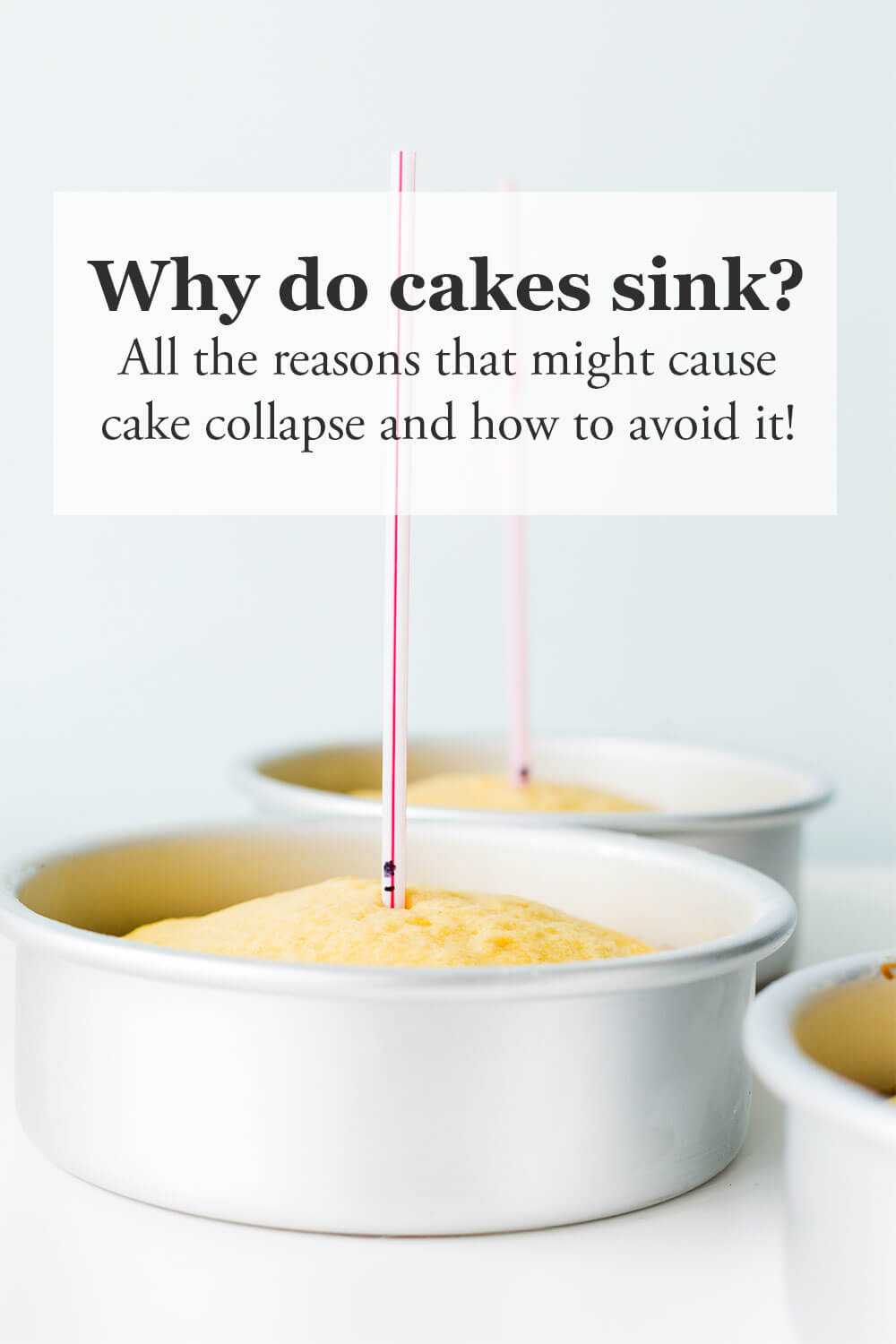
Jump to:
What causes a cake to sink?
The cake collapses because your oven isn't hot enough or your cake is under-baked
Your cakes may collapse if your oven temperature is too low. I always keep an oven thermometer in my oven to make sure that my oven is properly preheated before I put cakes in to bake.
The oven thermometer never leaves my oven. I shift it from one rack to another, as needed, but I rely on the thermometer to tell me what temperature my oven is. I like to use a ChefAlarm digital thermometer with an air probe attachment.
The heat of the oven is vital for encouraging baking powder to react so your cakes rise but also for the structure of the cake to set. If there's not enough heat to set the crust and the crumb inside, the cake may rise and fall.
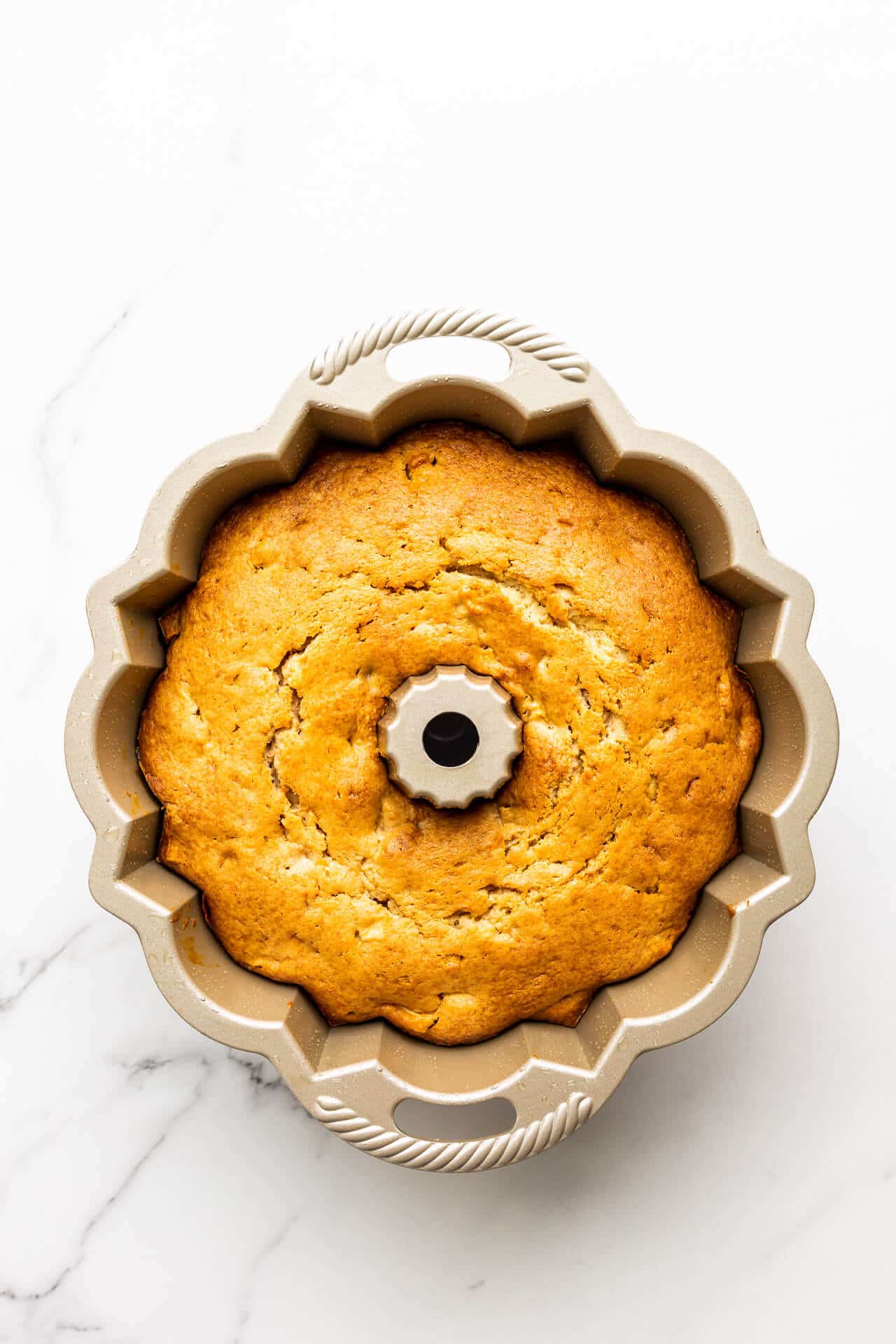
Furthermore, if you didn't leave your cake to bake for long enough, your cakes will also sink. For butter cakes, like this vanilla butter cake, I look for certain signs before I remove them from the oven. Here are a few ways to check if your cake is done baking:
- the skewer test: I poke the centre of the cake with a cake tester (like this one from Amazon) to see if it's still wet inside. If the tester comes out clean, the cake should be done (although some cakes are sneaky and may pass the skewer test but still require more oven time... that's a whole other story).
- the edges: I look at the edges of the cake, which should be nicely golden brown all around, especially in the area closest to the pan. The edges of the cake should have pulled away from the sides of the pan, a telltale sign the cake is baked through.
- the tap test: I give the top of the cake a light, gentle tap/poke with my hand. It should feel a little bouncy and possibly even spring back. If you press the cake and it makes a dent and it feels very "delicate" in an unset/wet cake kind of way. The cake isn't done. It's hard to explain, but when you press a cake that's not totally baked through and then you press it again when it's properly baked, you will feel that when the cake is cooked, it takes on a certain firmness and strength, though very delicate.
- the temperature: use an instant-read thermometer like the Thermapen or the Thermoworks ThermoPop to measure the internal temperature of your cake. When it's done baking, it should read 100 ºC or 212 ºF.
The cake sinks because it lacks structure
If you don't include enough structure-building ingredients in your recipe, the cake may collapse on itself. As the cake bakes, pushed upwards in the pan from carbon dioxide and steam, the cake needs support to maintain that volume and to set the height in place. If not, the cake will collapse on itself. This can even happen in the oven. There are a couple reasons a cake can lack enough support.
- not enough gluten: I've noticed this from playing around with gluten-free cake recipes especially. Gluten plays an important structural role, even in cakes. And so, when I develop gluten-free cake recipes, if I don't add a structure-providing ingredient, like extra egg, some xanthan gum or even ground chia/flax to compensate for the lack of gluten, the cake collapses on itself. This can even happen in the oven, before it's done baking (particularly tragic!). The cake can't support all that air and height and it falls, leading to a sunken, sometimes greasy cake that isn't very tasty or appetizing. I wrote about the process of developing a gluten-free cake made from mashed potatoes.
- not enough eggs, particularly the egg whites: Eggs provide structure and support to a cake as it bakes. The proteins in eggs coagulate and help contribute to the set of the cake, allowing your cakes to hold on to the height achieved in the oven. Not enough egg means not enough coagulation, and therefore not enough structure.
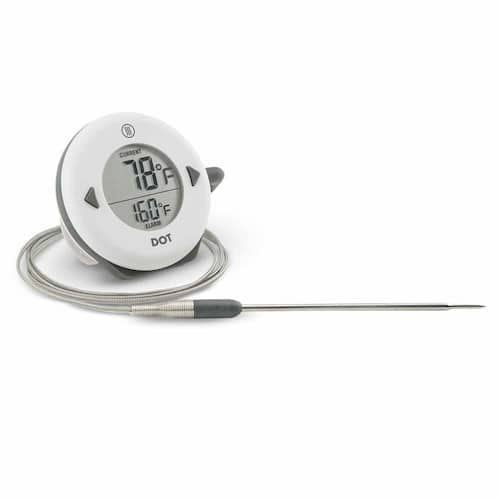
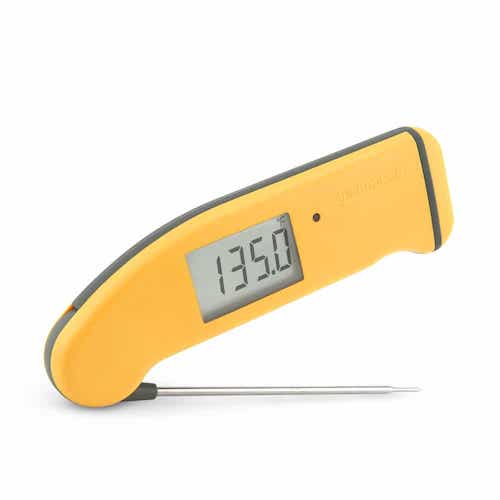
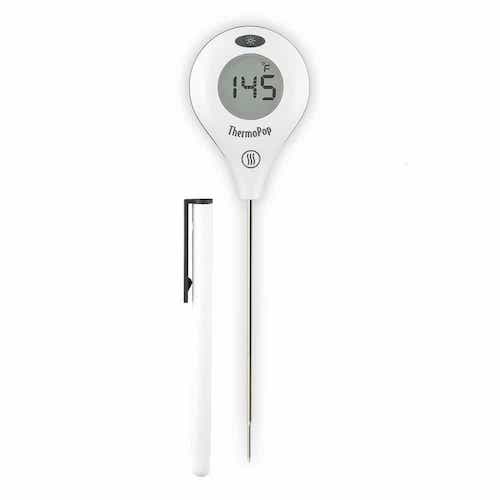
Too much of an ingredient can cause a cake to collapse
This relates to a lack of structure too, but if your ingredient ratio in your recipe is off, and there's too much of a certain ingredient, this can be quite disastrous because the recipe has too much of that something and not enough structure to hold it all together. The main culprits in this case are:
- too much fat: fat adds extra tenderness to a cake, sure, but too much tenderness comes with a lack of structure and collapsing. You have to find the right balance between tenderness from fat and structure.
- too much sugar: again, if that sugar is not balanced out with more eggs or more flour in your recipe, you're going to have a collapsed cake, and also a crumbly cake from lack of structure.
- too much leavener (baking powder or baking soda): think about it, the more leavener you have, the more gas will form inside the cake, and if there isn't a growing structure to support all that extra gas, the gas will escape. The cake will rise up and then collapse back down. Remember when I did the experiment to show the impact of too much baking soda? The cakes made with less baking soda rose far more. In retrospect, that was probably because the cakes with more leavener rose and collapsed, and also because the pH affects the structural proteins, preventing them from assembling.
- too much liquid: again, extra liquid has to come with extra structure, or else there could be trouble.
Essentially, too much of certain ingredients (fat, sugar, leavening agent, liquid) can lead to cake collapse, while not enough of other ingredients (eggs and flour) can also lead to cake collapse. It's so important to properly measure ingredients for baking, but also to bake from reliable recipes that have been tested.
Taking a cake out of the oven before it's baked through is also to blame. Are there any other reasons I might have missed that you can think of?
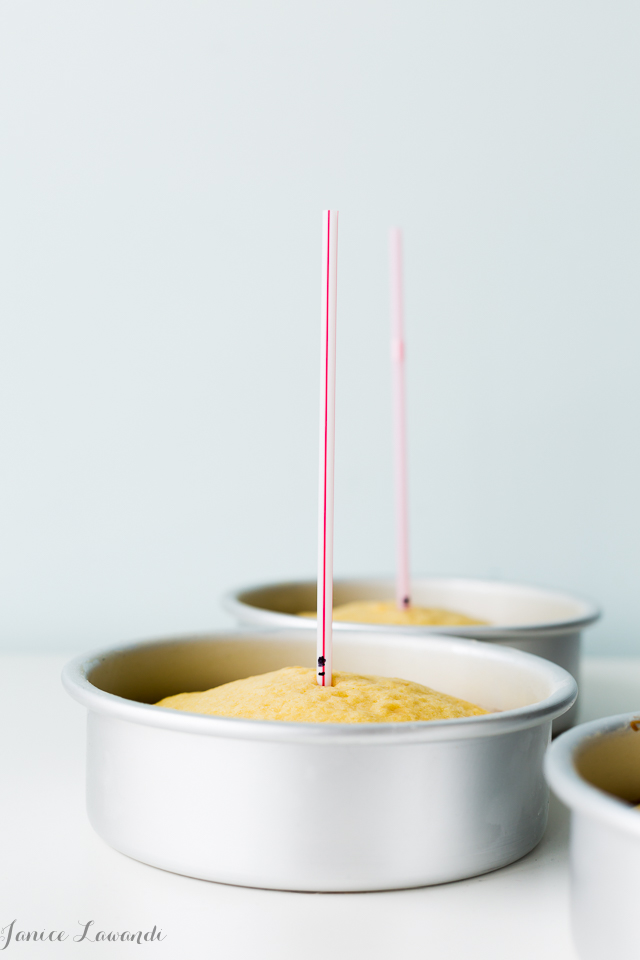
How to avoid cake collapse and cake sinking as they cool?
Knowing how to test when a cake is done baking is essential to successful baking and to avoid cake collapse. It seems obvious but, if you are baking a recipe that you are familiar with and have successfully tested before, your cake sank simply because it wasn't baked enough or because you skipped a step, an ingredient, or maybe you added too much of something. It happens.
If you are baking a new recipe that you aren't familiar with, perhaps there's a typo in the recipe that the author didn't catch and some ingredient is missing (or perhaps too much of an ingredient was listed by accident). This also happens a lot.
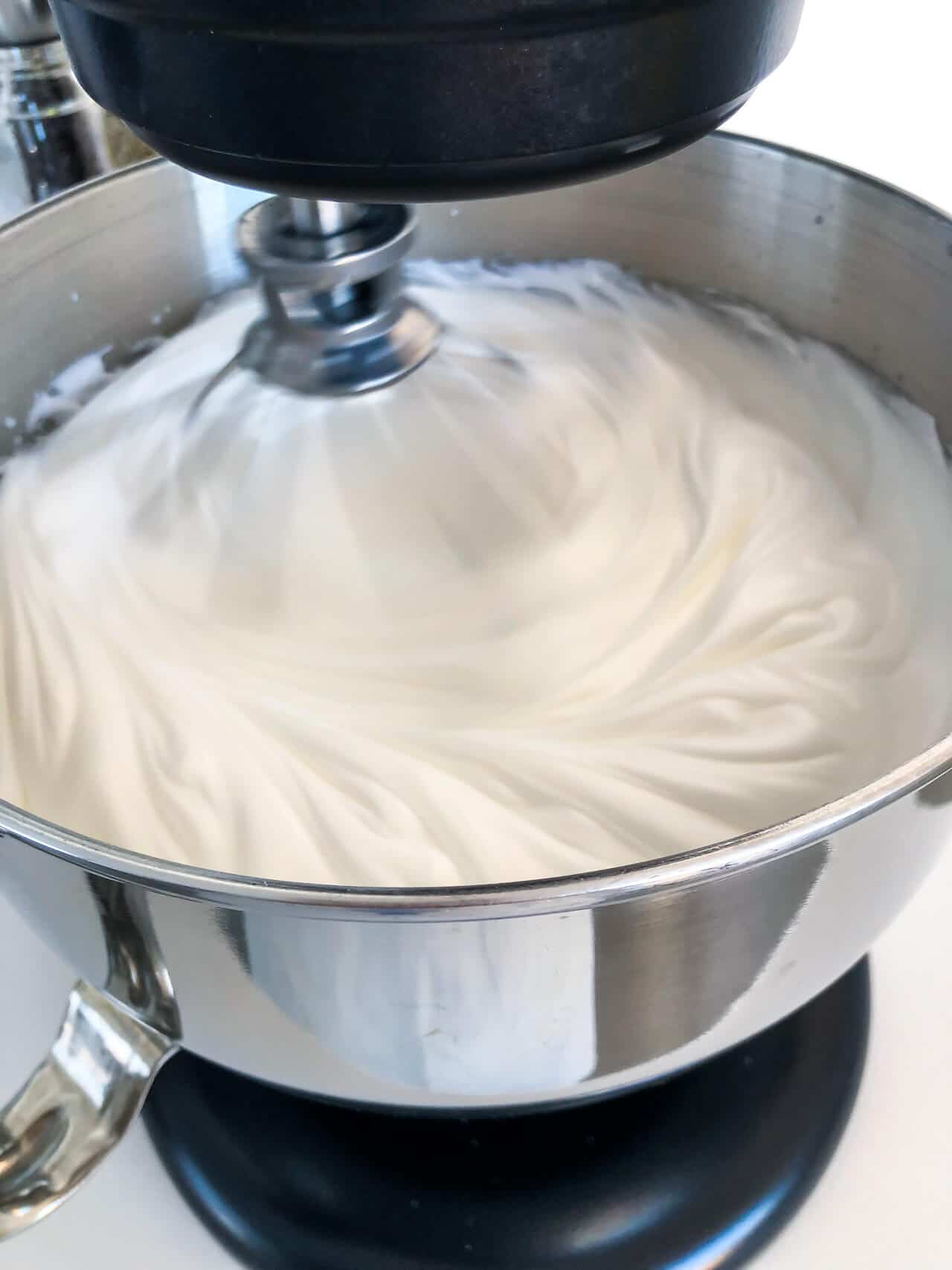
For Angel food cakes, cool the cake upside down
There is a trick to prevent sponge cakes like Angel food cakes from sinking: cool these cakes upside down! By cooling the cake upside down, the cake has plenty of room to stretch out of the pan, instead of collapsing into the bottom of the pan.
Cooling certain sponge cakes upside down leads to a taller cake and a lighter texture. But this only works for sponge cakes baked in ungreased pans/unfloured pans because these cakes stick to the sides of pan. A regular vanilla cake would fall right out of the cake pan if cooled upside down because of the nature of the cake and the way the cake pan is prepared before baking.
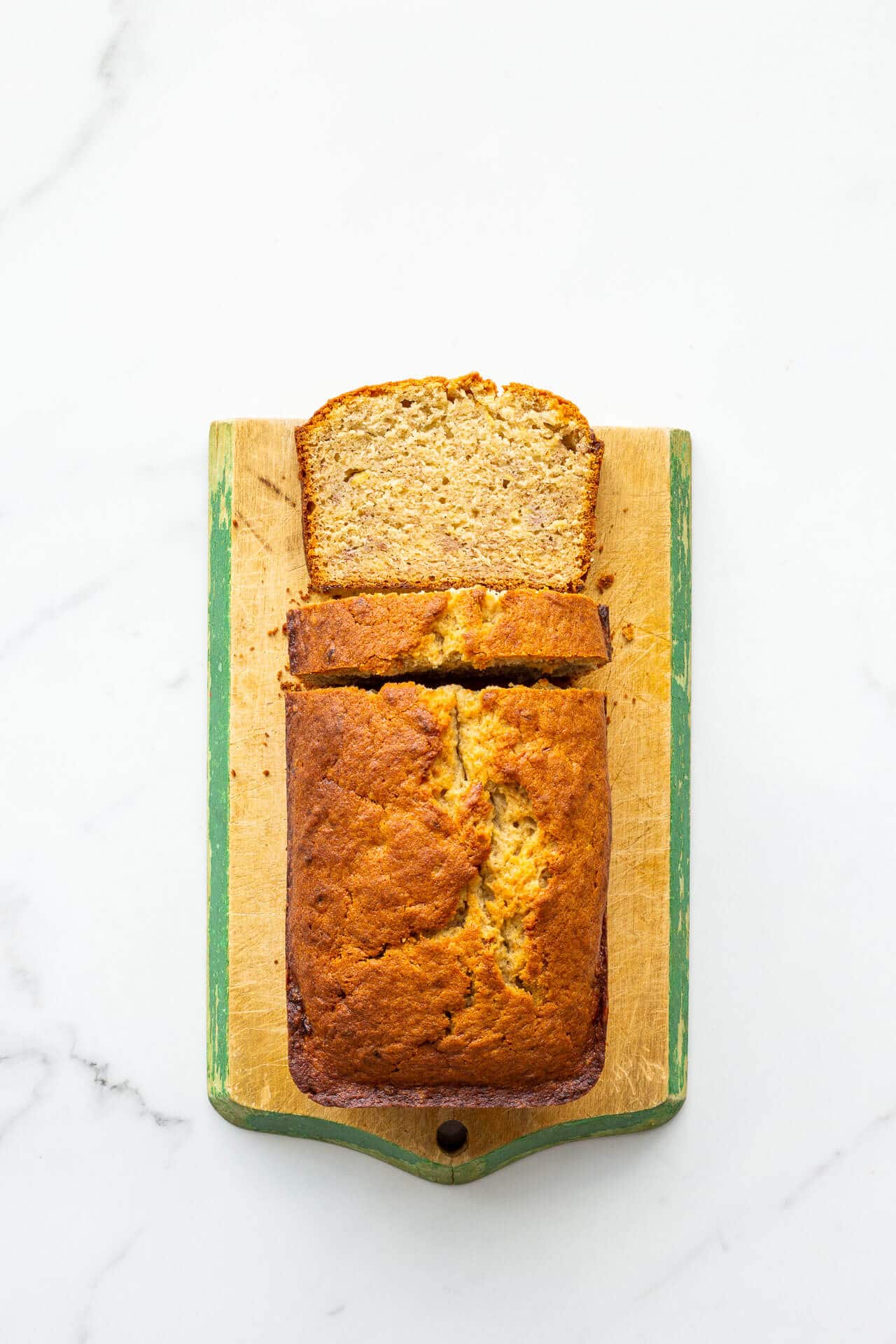
A science theory about cake collapse:
You might recall, in my post about the best baking and baking science books, I mentioned reading, in "The Science of Cooking," (available on Amazon) that Peter Barham claims to prevent a cake from collapsing as it cools, you have to drop it on the counter. He writes that cakes collapse as they cool because steam condenses in the cake bubbles.
The cake bubbles shrink because air can't get into those cake bubbles to replace the volume lost. Shrinking bubbles means shrinking cake, basically, and the shrinking occurs most towards the middle of the cake because the centre of the cake is softer, while the crust is too dry and stiff to contract.
Barham goes on to offer a way of preventing cake collapse, specifically stating that "Dropping the cake, from a height of about 30 cm on to a hard surface, passes a shock through the bubble walls and allows some of them to break, converting the cake from a closed to an open cell structure. Now air is able to get into the broken bubbles and the cake will not collapse."
Obviously, I had to test this to see for myself.
Cake collapse experiment:
I made my go-to vanilla cake recipe (that I've modified to make the cardamom cranberry cake and the Earl Grey cake), which happens to make 3 layers of cake. This way I could have my control sample, which is a cake that goes straight from oven to cooling rack without any jostling or dropping, and then 2 cakes that I drop immediately after removing from the oven. Fun times, I tell you!
I used straws and a Sharpie marker to mark the heights of the cake, immediately after baking, and then after cooling. Then I measured the change in height. All the cakes lost a little height upon cooling, but go figure, the cake that wasn't dropped shrank the least (about 1–2 mm), while the dropped cakes shrank about 3–4 mm.
Basically, there was more cake collapse observed if I dropped the cakes from a height of 30 cm. That's exactly what I was expecting and the opposite of what Peter Barham claimed. Cakes are fragile when they come out of the oven. It seems pretty logical to me that if you drop a cake when it's most fragile, it will collapse a little from the shock. Right? I made this "quirky" video for you to illustrate my experiment.
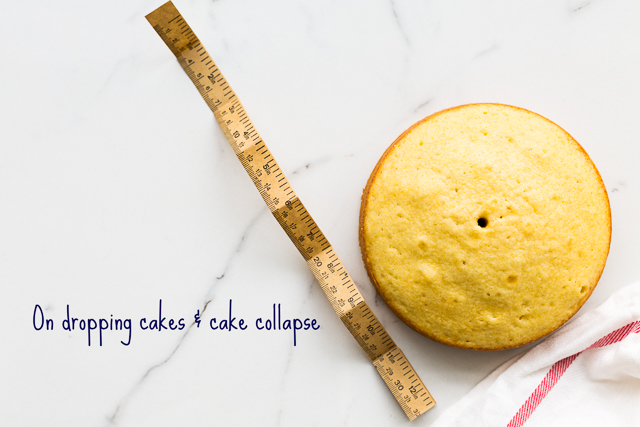
Final thoughts
By the way, looking at the inside of this cake, we see that I had large holes in the cake, but writing this post made me realize a few things: given the big bubbles inside and the spotting that I've been observing on the surface of my cakes (look at the 1st photo of this post again), I'm wondering if I'm working with too much leavener in my cake recipe. I use 2 teaspoon baking powder for 2 cups of flour, but according to some baking references, my recipe might only need ½ teaspoon per cup (therefore 1 teaspoon baking powder for 2 cups of flour).
This means, my working recipe might possibly have more baking powder than is needed, specifically double. I have also been wondering if I need a touch more milk/wet ingredients in my recipe. Perhaps the batter is a little too thick and this is leading to pockets of air that can't easily be smoothed or tapped out before baking. All that to say: clearly, I need to make more cakes!

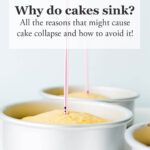
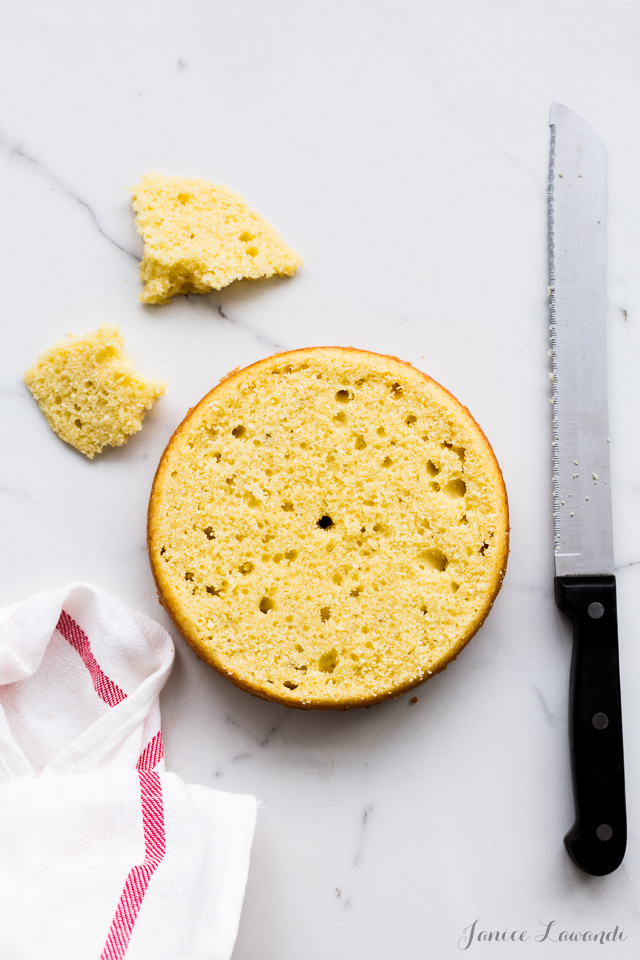
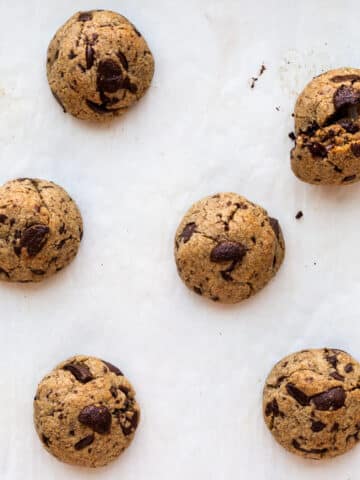

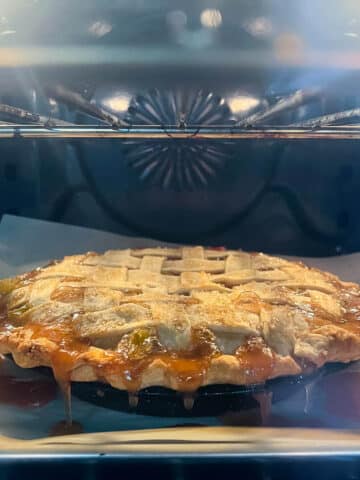
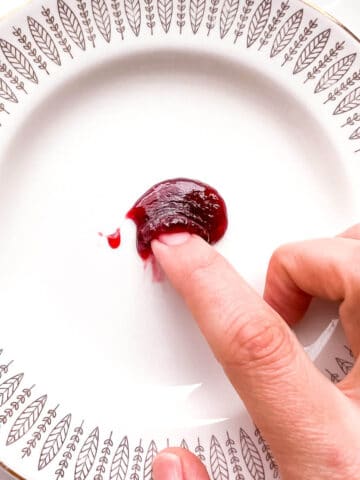
Jennifer says
In culinary school I was taught to drop the cakes prior to putting them into the oven (to help get rid of air bubbles in the batter prior to baking).
Janice says
Yes! Me too! Either to bang the pan with cake batter or to swirl it on the counter before putting the pan in the oven. But the suggestion in the book was to drop the baked cake in the pan on the counter AFTER baking, which I still think is counterintuitive and doesn't seem to yield the result the author claims.